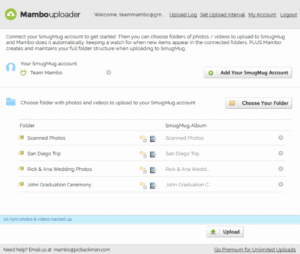-
Table of Contents
- Introduction to Command Prompt messaging on a Windows network
- Step-by-step guide: Sending messages via CMD to another Windows PC
- Advanced techniques for sending messages using Command Prompt on a network
- Troubleshooting common issues when sending CMD messages to another Windows PC
- Best practices for secure messaging through Command Prompt on a network
- Q&A
Sending messages by CMD to another Windows PC on a network: A quick and efficient way to communicate seamlessly.
Introduction:
Sending messages through the Command Prompt (CMD) to another Windows PC on a network can be a useful way to communicate with other users on the same network. By utilizing the “net send” command, you can easily send messages to specific computers or all computers within the network. This guide will provide you with step-by-step instructions on how to send messages using CMD to another Windows PC on a network.
Introduction to Command Prompt messaging on a Windows network
Introduction to Command Prompt messaging on a Windows network
In today’s interconnected world, communication is key. Whether it’s for work or personal purposes, being able to send messages quickly and efficiently is essential. While there are numerous messaging apps and platforms available, sometimes you may find yourself in a situation where these options are not available or practical. In such cases, the Command Prompt messaging feature on a Windows network can come in handy.
Command Prompt, also known as CMD, is a powerful tool that allows users to interact with their computer through a command-line interface. While it may seem intimidating at first, mastering the basics of CMD can open up a world of possibilities. One such possibility is the ability to send messages to other Windows PCs on the same network.
To send messages using CMD, you’ll need to know the IP address of the target computer. The IP address is a unique identifier assigned to each device on a network. Once you have the IP address, open the Command Prompt by pressing the Windows key + R, typing “cmd” in the Run dialog box, and hitting Enter.
With the Command Prompt open, you can now use the “msg” command to send messages. The syntax for the “msg” command is as follows: “msg {username | sessionname | sessionid | @filename | *}” followed by the message you want to send. Let’s break down each component of the command.
The “username” option allows you to specify the username of the target computer. This is useful if you know the username of the person you want to send a message to. For example, if the username is “JohnDoe,” the command would be “msg JohnDoe Hello, how are you?”
The “sessionname” option is similar to the “username” option but instead uses the session name of the target computer. This can be useful if you know the session name but not the username. For example, if the session name is “Console,” the command would be “msg Console Hello, how are you?”
The “sessionid” option allows you to specify the session ID of the target computer. This is useful if you know the session ID but not the username or session name. For example, if the session ID is “2,” the command would be “msg 2 Hello, how are you?”
The “@filename” option allows you to specify a text file containing a list of usernames, session names, or session IDs. This can be useful if you want to send the same message to multiple recipients. For example, if the text file is “users.txt,” the command would be “msg @users.txt Hello, how are you?”
The “*” option allows you to send a message to all users on the target computer. This can be useful if you want to broadcast a message to everyone. For example, the command would be “msg * Hello, how are you?”
Once you’ve entered the appropriate command, hit Enter to send the message. The recipient will receive a pop-up window with the message you sent. They can then choose to respond or ignore the message.
In conclusion, the Command Prompt messaging feature on a Windows network provides a convenient way to send messages to other PCs. By mastering the basics of CMD and understanding the syntax of the “msg” command, you can easily communicate with others on your network. Whether it’s for work-related discussions or casual conversations, CMD messaging is a valuable tool in your communication arsenal.
Step-by-step guide: Sending messages via CMD to another Windows PC
Sending messages via CMD to another Windows PC on a network can be a useful way to communicate with colleagues or friends. Whether you need to quickly share information or simply want to chat, this method allows for direct communication without the need for additional software or applications. In this step-by-step guide, we will walk you through the process of sending messages using CMD.
Firstly, it is important to ensure that both your computer and the recipient’s computer are connected to the same network. This can be a local area network (LAN) or a wide area network (WAN). Once you have confirmed the network connection, you can proceed to the next step.
To begin, open the Command Prompt on your computer. You can do this by pressing the Windows key and typing “cmd” into the search bar. Once the Command Prompt appears in the search results, click on it to open the application.
Next, you will need to determine the IP address of the recipient’s computer. This can be done by opening the Command Prompt on their computer and typing “ipconfig” into the command line. The IP address will be displayed under the “IPv4 Address” section. Make note of this address as you will need it later.
Returning to your own Command Prompt, type the following command: “msg [IP address] [message]”. Replace [IP address] with the recipient’s IP address and [message] with the content of your message. For example, if the recipient’s IP address is 192.168.1.100 and you want to send the message “Hello, how are you?”, the command would be: “msg 192.168.1.100 Hello, how are you?”.
After entering the command, press Enter to send the message. If successful, you should see a confirmation message indicating that the message has been sent. The recipient’s computer will also receive a pop-up notification with the content of the message.
It is worth noting that both your computer and the recipient’s computer must have the Windows Messaging service enabled for this method to work. By default, this service is usually enabled on most Windows computers. However, if you encounter any issues, you can check the status of the service by opening the Services application on your computer and ensuring that the “Windows Messaging” service is running.
Additionally, it is important to keep in mind that this method of sending messages is limited to text-only communication. You cannot send files or multimedia content using CMD. If you need to share files, it is recommended to use alternative methods such as email or file-sharing platforms.
In conclusion, sending messages via CMD to another Windows PC on a network can be a convenient way to communicate directly with others. By following the step-by-step guide outlined in this article, you can easily send messages using the Command Prompt. Remember to ensure that both computers are connected to the same network and that the Windows Messaging service is enabled. With these considerations in mind, you can enjoy seamless communication with your colleagues or friends.
Advanced techniques for sending messages using Command Prompt on a network
Sending messages using Command Prompt (CMD) is a powerful tool that allows users to communicate with other Windows PCs on a network. This advanced technique can be particularly useful in a professional setting where quick and efficient communication is essential. In this article, we will explore the steps involved in sending messages by CMD to another Windows PC on a network.
To begin, it is important to ensure that both the sender and the recipient are connected to the same network. This can be achieved by checking the network settings on both PCs and ensuring that they are connected to the same network name or IP address. Once this is confirmed, the sender can proceed with the following steps.
Firstly, the sender needs to open the Command Prompt on their PC. This can be done by pressing the Windows key + R to open the Run dialog box, typing “cmd” and pressing Enter. The Command Prompt window will then appear.
Next, the sender needs to determine the IP address of the recipient’s PC. This can be done by typing “ipconfig” in the Command Prompt and pressing Enter. The IP address will be displayed under the “IPv4 Address” section. It is important to note down this IP address as it will be used in the next step.
Once the IP address is obtained, the sender can proceed with sending the message. In the Command Prompt, the sender needs to type the following command: “msg /server:IP_address username message”. Here, “IP_address” should be replaced with the recipient’s IP address, “username” should be replaced with the recipient’s username, and “message” should be replaced with the actual message that the sender wants to send. After typing the command, the sender needs to press Enter.
If the message is sent successfully, the recipient will receive a pop-up window displaying the message. This allows for quick and direct communication between the sender and the recipient. It is important to note that both the sender and the recipient need to have administrative privileges on their PCs for this method to work.
In addition to sending messages to a specific user, CMD also allows for sending messages to all users on a network. This can be done by typing the following command in the Command Prompt: “msg /server:IP_address * message”. Here, the asterisk (*) is used to indicate that the message should be sent to all users on the network. Again, the sender needs to replace “IP_address” with the actual IP address of the recipient’s PC and “message” with the desired message.
In conclusion, sending messages using Command Prompt is an advanced technique that can greatly enhance communication on a network. By following the steps outlined in this article, users can easily send messages to other Windows PCs on the same network. Whether it is for professional or personal use, this method provides a quick and efficient way to communicate with others.
Troubleshooting common issues when sending CMD messages to another Windows PC
Sending messages through the Command Prompt (CMD) to another Windows PC on a network can be a useful way to communicate with other users or troubleshoot common issues. However, there are certain challenges that may arise when attempting to send CMD messages, and it is important to be aware of these and know how to address them.
One common issue that users may encounter when trying to send CMD messages is the “Access is denied” error message. This error typically occurs when the user does not have the necessary permissions to send messages to the target PC. To resolve this issue, it is important to ensure that the user has administrative privileges on both the sending and receiving PCs. By right-clicking on the Command Prompt and selecting “Run as administrator,” users can elevate their privileges and gain the necessary permissions to send messages.
Another issue that may arise is the “The message alias could not be found on the network” error. This error occurs when the target PC cannot be located on the network. To address this issue, users should ensure that they have entered the correct PC name or IP address when sending the message. It is also important to verify that the target PC is connected to the network and accessible. Users can do this by pinging the target PC’s IP address to check for a response. If there is no response, it may indicate a network connectivity issue that needs to be resolved before sending CMD messages.
In some cases, users may encounter the “The message alias is currently in use” error message. This error occurs when the target PC is already engaged in a messaging session and cannot accept new messages. To resolve this issue, users should wait for the current messaging session to end before attempting to send a new message. Alternatively, users can try sending the message to a different PC on the network or use alternative methods of communication, such as email or instant messaging.
It is also worth noting that some network configurations may block CMD messages by default. This can be due to security settings or firewall restrictions. To enable CMD messaging, users should check their firewall settings and ensure that the necessary ports are open. Additionally, it may be necessary to configure network policies or permissions to allow CMD messages to be sent and received.
In conclusion, sending CMD messages to another Windows PC on a network can be a valuable tool for communication and troubleshooting. However, it is important to be aware of common issues that may arise and know how to address them. By understanding and resolving issues such as “Access is denied,” “The message alias could not be found on the network,” and “The message alias is currently in use,” users can effectively send CMD messages and enhance their network communication capabilities.
Best practices for secure messaging through Command Prompt on a network
In today’s interconnected world, the ability to send messages quickly and securely is essential. While there are many messaging platforms available, sometimes it is necessary to send messages through the Command Prompt on a network. This article will discuss the best practices for secure messaging through Command Prompt on a network, ensuring that your messages are delivered safely and efficiently.
First and foremost, it is important to establish a secure connection between the two Windows PCs on the network. This can be done by ensuring that both PCs are connected to the same network and have the necessary permissions to communicate with each other. It is also advisable to use a virtual private network (VPN) to encrypt the connection and protect your messages from potential eavesdropping.
Once the connection is established, you can begin sending messages through the Command Prompt. The first step is to open the Command Prompt on the sending PC. This can be done by pressing the Windows key + R, typing “cmd” in the Run dialog box, and pressing Enter. The Command Prompt window will open, ready for you to enter your commands.
To send a message to another Windows PC on the network, you will need to know the IP address or hostname of the receiving PC. This information can be obtained by running the “ipconfig” command on the receiving PC and noting down the IPv4 address or hostname. Once you have this information, you can use the “msg” command in the Command Prompt to send your message.
The syntax for the “msg” command is as follows: “msg /server:IP_or_hostname username message”. Replace “IP_or_hostname” with the IP address or hostname of the receiving PC, “username” with the username of the recipient, and “message” with the content of your message. For example, if you want to send a message to a user named “John” on a PC with the IP address “192.168.1.100”, you would enter the following command: “msg /server:192.168.1.100 John Hello, how are you?”.
It is important to note that both PCs must be running a version of Windows that supports the “msg” command, such as Windows 7, Windows 8, or Windows 10. Additionally, the receiving PC must have the necessary permissions to receive messages. If you encounter any issues, it is advisable to check the firewall settings and ensure that the necessary ports are open for communication.
To enhance the security of your messages, it is recommended to encrypt the content before sending it through the Command Prompt. This can be done by using encryption tools such as PGP (Pretty Good Privacy) or GPG (GNU Privacy Guard). These tools allow you to encrypt your messages using a public key, ensuring that only the intended recipient can decrypt and read the message.
In conclusion, sending messages through the Command Prompt on a network can be a secure and efficient way to communicate between Windows PCs. By following the best practices outlined in this article, such as establishing a secure connection, using encryption tools, and ensuring the necessary permissions are in place, you can send messages confidently, knowing that they will be delivered safely and securely.
Q&A
1. How can I send messages using CMD to another Windows PC on a network?
You can use the “net send” command followed by the IP address or computer name of the target PC, along with the message you want to send.
2. What is the syntax for sending messages through CMD to another Windows PC on a network?
The syntax is: “net send [IP address or computer name] [message]”.
3. Are there any specific requirements for sending messages via CMD to another Windows PC on a network?
Both the sending and receiving PCs should be connected to the same network, and the “Messenger” service should be enabled on the receiving PC.
4. Can I send messages to multiple PCs simultaneously using CMD?
No, the “net send” command can only send messages to one PC at a time.
5. Is there an alternative method to send messages between Windows PCs on a network?
Yes, you can use the “msg” command instead of “net send” to send messages between Windows PCs on a network. The syntax is: “msg [username or session ID] [message]”.To send messages by CMD to another Windows PC on a network, follow these steps:
1. Open the Command Prompt on your Windows PC.
2. Use the “ipconfig” command to find the IP address of the target PC.
3. Once you have the IP address, use the “msg” command followed by the IP address and the message you want to send. For example: “msg IP_address message”.
4. Press Enter to send the message.
5. The message will be displayed on the target PC’s screen.
In conclusion, sending messages by CMD to another Windows PC on a network can be done by using the “msg” command followed by the IP address of the target PC and the message you want to send.









